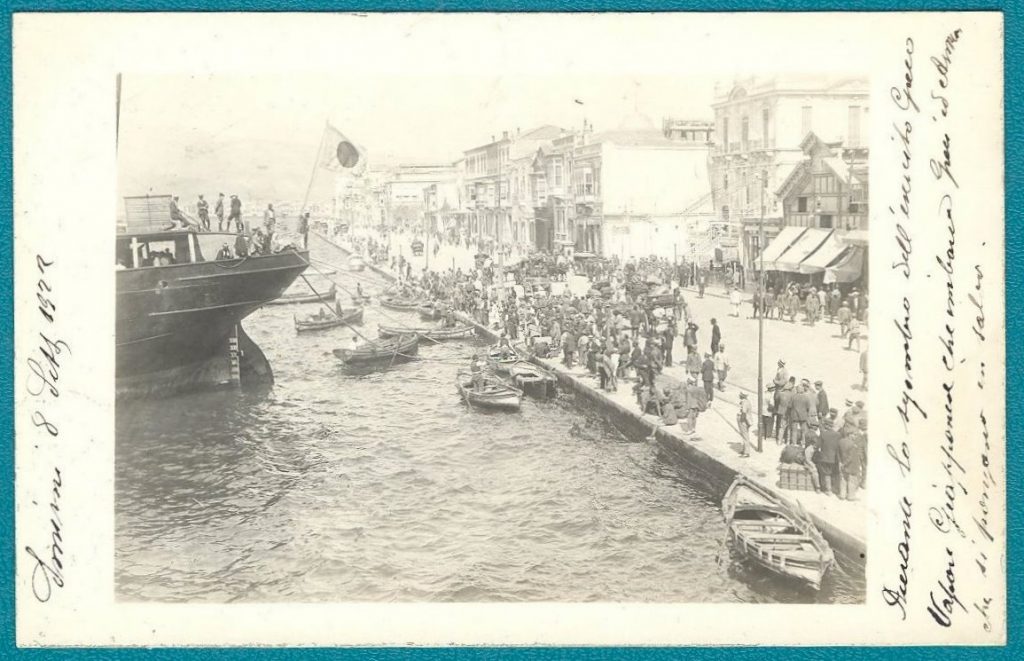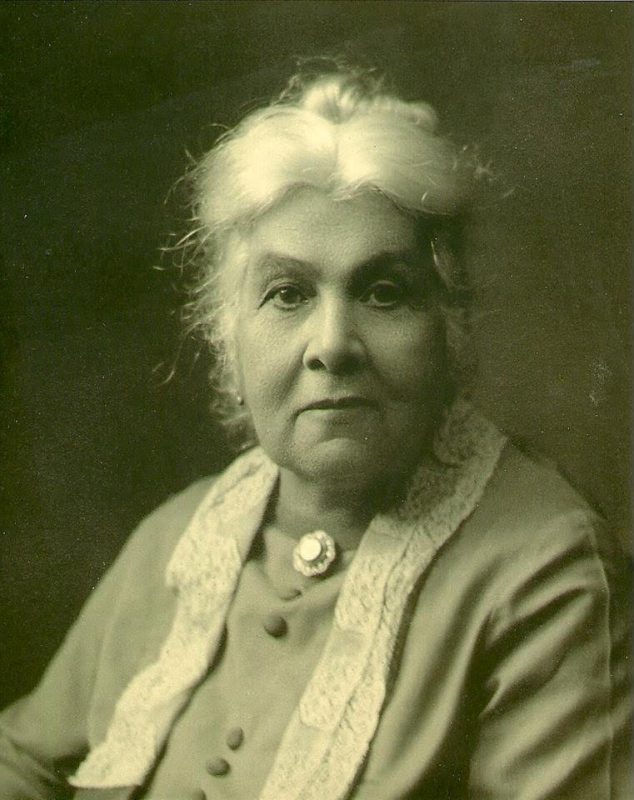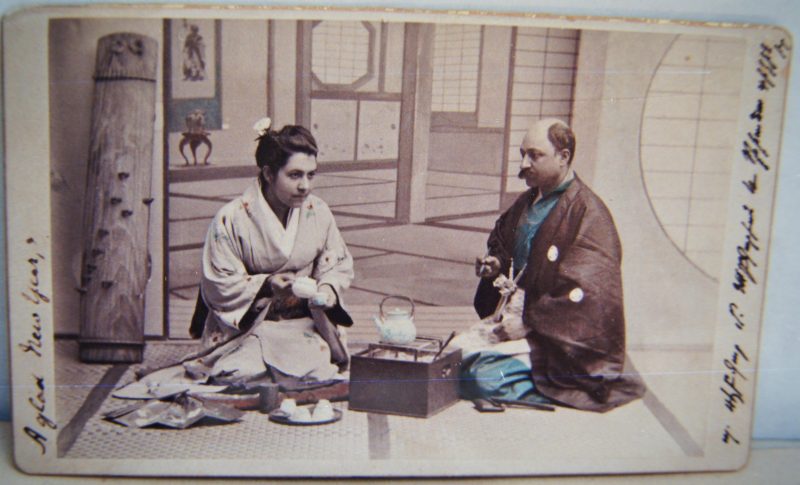A Forgotten Ally, Part Two: Answering the Call
Japanese Ship at Smyrna
On March 28th, 2018, Vicken Babkenian was the keynote speaker at an event honoring Eiichi Shibusawa and the Armenian relief movement in Japan. The presentation was organized by ANCA West Region and the Japan America Society of Southern California. The following dispatch is based on his presentation and continuing work documenting the key, but the often unknown role, Japan played in providing relief and aid during and after the Armenian Genocide. Vicken Babkenian is an independent researcher for the Australian Institute for Holocaust and Genocide Studies. He is the co-author (with Prof. Peter Stanley) of Armenia, Australia and the Great War (NewSouth Publishing, 2016), which was shortlisted in two major Australian literary awards.
This is the second and final dispatch about Japanese aid following the Armenian Genocide. You can read the first installment here.
************************
While humanitarian advocacy was taking place throughout Japan, on the other side of the world, the captain and crew of a Japanese ship, the Tokei Maru, found themselves in the midst of a humanitarian catastrophe. Hundreds of thousands of Greek and Armenian refugees had fled to the shores of Smyrna as Turkish nationalist troops entered and occupied the city on September 9, 1922. The Turkish occupation was followed by a massacre and deportation of the Armenian and Greek civilians. As deportation orders were underway, a fire broke out in the Armenian quarter four days later, destroying much of the city.
Having a full view of the catastrophe were some 20 warships and freighters stationed at the harbor, including the Tokei Maru. An American, Anna Birge, witnessed the desperate refugees gathering on the wharves as Smyrna burned behind them. Men and women could be seen swimming around in the hope of rescue, many of whom later drowned. The humanitarian action of the Japanese ship was also recorded by many other foreign observers, as well as Armenian and Greek survivors of the tragedy. To learn more about the Great Fire of Smyrna, click here.
In the harbor at that time was a Japanese freighter which had just arrived loaded to the decks with a very valuable cargo of silks, laces, and China representing many thousands of dollars. The Japanese captain, when he realized the situation did not hesitate. The whole cargo went overboard into the dirty waters of the harbor, and the freighter was loaded with several hundred refugees, who were taken to safety to Greek shores.

Japanese Ship at Smyrna
Golden Rule Sunday
Back home in the U.S., the Armenian relief movement continued with Japan’s participation in Near East Relief annual International Golden Rule Sunday, which began to be observed in 1923.
The general method of observance was to provide for their Sunday dinner approximately the same menu that was provided by the Near East Relief for the tens of thousands of Armenian orphans in its care and to reflect on the needs of the orphans. NER then asked people to make such an offering or pledge for their continued support.
Without a doubt, the universal moral principle behind the Golden Rule Sunday would have strongly resonated with Eiichi Shibusawa who was an ardent follower of Confucius philosophy and a sincere advocate for helping the less fortunate.
Japan’s Prince Tokugawa observed the Golden Rule Sunday and sent a generous amount of money, accompanied by a beautiful personal letter, to the Near East Relief. He also took a leading part in supervising and distributing literature on the Golden Rule Sunday to all members of the House of Peers. Another Japanese statesman, Viscount Fukuoka, placed 1,000 copies of the Golden Rule message in the hands of the Peers Club of Japan.
Reporting on Japan’s participation in the Golden Rule Sunday, A Near East Relief publication in 1926 stated: “Even the cynic must grant that the forwarding of these golden rule contributions of goodwill from the Buddhists and Christians of Japan in the Far East to New York for transmission to the Christian orphans of the Near East, is prophetic of more wholesome and friendly international relations.”
By 1930, the American Near East Relief organization had raised over 110 million dollars – about 1.6 billion dollars in today’s terms – and rescued more than a million Armenians, Greeks and Assyrians from almost certain death. This figure included over 130,000 children who were housed, fed and educated in more than 200 orphanages across the region. It was an unsurpassed achievement, remarkable even by today’s standards, accomplished through the pioneering of philanthropic techniques that continue to be used today. The Near East Relief provided a model for many of today’s most well-known development organizations—including the Peace Corps.
To learn more about Golden Rule Sunday and the other giving campaigns used by NER, click here.

Golden Rule Sunday

Diana Apcar
Another important Japanese link to Armenia was through a Burmese born Armenian, Diana Apcar, who lived in Japan from 1891 until her death in 1937. Apcar was a prolific writer, businesswoman, and diplomat. Most notably, she was made Consul of the Republic of Armenia to Japan during the short-lived Armenian republic between 1918 and 1920. It was a diplomatic post which allowed her to speak in the name of a sovereign state when reaching out to individuals and institutions. In this way, Diana was able to secure from the Japanese government special approval to allow Armenian refugees to enter Japan from Russia. This approval alleviated distress among the refugees and helped them find a permanent settlement in the United States and elsewhere while in transit from Japan.
Unfortunately, there isn’t any record of Diana meeting with or mentioning Shibusawa but that does not mean that it did not happen. Due to the 1923 Great Kanto earthquake, all of Diana’s records and personal belongings were destroyed and lost in her collapsed house. Hopefully, one-day documentation will surface which links these two profound individuals.

Japan & Armenia today
Sadly, Eiichi Shibusawa passed away in 1931 but his legacy continues today, not only in Japan’s industrial development but in the area of internationalism and humanitarian relief. When Armenia was struck by a major earthquake on December 7, 1988, Japan was among the first nations to respond by sending a rescue team and relief supplies. Armenia responded likewise when the powerful earthquake and tsunami struck Japan on March 11, 2011. The Japanese International Cooperation Agency continues to assist Armenia today in many ways by improving basic infrastructure, promoting small and medium-sized enterprises and strengthening measures for disaster prevention. Only a few weeks ago, the Japanese government contributed a generous sum to help Syrian Armenian refugees re-establish themselves in Armenia.
Japan and Armenia are countries that share a rich cultural heritage and a long history of civilization. They are geographically far apart, but they were brought together a century ago by a humanitarian bond that helped the Armenians survive as a people and a nation. For Japan, this response was an early manifestation of the humanitarian ethos that forms part of their nation’s engagement with international movements today.
